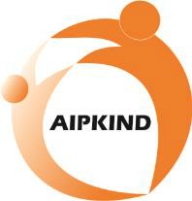Development of Applications to Prevent Children’s Anemia to Increase Mother’s Knowledge about Anemia in Children
Abstract
Anemia is a health problem that is often found throughout the world and has an impact on the quality of human resources. Nutritional anemia will slowly inhibit the growth and development of intelligence, children will be more susceptible to disease due to decreased immune systems, this will certainly improve the condition of children as successors. Utilizing current technological developments, it is very possible to develop systems that can optimize children's health, especially during the COVID-19 pandemic. The purpose of this study was to know the effect of the application of prevention of anemia in children on mother's knowledge about anemia in children. Quasi-experimental research using pre-post test control group design. Samples were mothers who had children under five in the Puskesmas Banguntapan II, which were divided into two groups (35 intervention groups and 35 control groups). Data analysis with univariate and bivariate. The group was given an application intervention to prevent anemia in children. The control group conducted presented information in accordance with the procedures carried out from the puskesmas with leaflets. Both groups were measured before the intervention and 1 month before the intervention using a questionnaire. The results showed there was a significant increase between the intervention group compared to the control group in the level of mother's knowledge about child anemia (p=0.001). The result is applications increase the effectiveness of mothers’ knowledge about anemia in children, the use of applications is more effective than the use of leaflets in increasing knowledge about anemia.
Keywords
Full Text:
PDFReferences
Who and M. Chan, “Haemoglobin concentrations for the diagnosis of anaemia and assessment of severity,” Geneva, Switz. World Heal. Organ., pp. 1–6, 2011, doi: 2011.
C. Mitchinson, N. Strobel, D. McAullay, K. McAuley, R. Bailie, and K. M. Edmond, “Anemia in disadvantaged children aged under five years; Quality of care in primary practice,” BMC Pediatr., vol. 19, no. 1, pp. 1–11, 2019, doi: 10.1186/s12887-019-1543-2.
A. Zhao et al., “Prevalence of anemia and its risk factors among children 6-36 months Old in Burma,” Am. J. Trop. Med. Hyg., vol. 87, no. 2, pp. 306–311, 2012, doi: 10.4269/ajtmh.2012.11-0660.
V. M. Hodges, S. Rainey, T. R. Lappin, and A. P. Maxwell, “Pathophysiology of anemia and erythrocytosis.,” Crit. Rev. Oncol. Hematol., vol. 64, no. 2, pp. 139–158, Nov. 2007, doi: 10.1016/j.critrevonc.2007.06.006.
S. Sundararajan and H. Rabe, “Prevention of iron deficiency anemia in infants and toddlers,” Pediatr. Res., vol. 89, no. 1, pp. 63–73, 2021, doi: 10.1038/s41390-020-0907-5.
L. L. S. Da Silva, W. W. Fawzi, and M. A. Cardoso, “Factors associated with anemia in young children in Brazil,” PLoS One, vol. 13, no. 9, pp. 1–12, 2018, doi: 10.1371/journal.pone.0204504.
J. Zhao, B. Freeman, and M. Li, “Can Mobile Phone Apps Influence People’s Health Behavior Change? An Evidence Review.,” J. Med. Internet Res., vol. 18, no. 11, p. e287, Oct. 2016, doi: 10.2196/jmir.5692.
J. M. Sherry and S. C. Ratzan, “Measurement and evaluation outcomes for mHealth communication: don’t we have an app for that?,” Journal of health communication, vol. 17 Suppl 1. United States, pp. 1–3, 2012, doi: 10.1080/10810730.2012.670563.
N. H. F. Losong and M. Adriani, “Perbedaan Kadar Hemoglobin, Asupan Zat Besi, dan Zinc pada Balita Stunting dan Non Stunting,” Amerta Nutr., vol. 1, no. 2, p. 117, 2017, doi: 10.20473/amnt.v1i2.6233.
J. W. Creswell, Qualitative inquiry & research design: Choosing among five approaches, 4th ed. Thousand Oaks, CA: Sage., 2012.
S. Notoadmodjo, Metodologi Penelitian Kesehatan. Jakarta: Rineka Cipta, 2012.
N. Safaat, Pemrograman Aplikasi Mobile Smartphone dan Tablet PC Berbasis Android, Revisi. Bandung: Penerbit Informatika Bandung, 2012.
M. Fiordelli, N. Diviani, and P. J. Schulz, “Mapping mhealth research: A decade of evolution,” J. Med. Internet Res., vol. 15, no. 5, 2013, doi: 10.2196/jmir.2430.
P. Klasnja and W. Pratt, “Healthcare in the pocket: mapping the space of mobile-phone health interventions.,” J. Biomed. Inform., vol. 45, no. 1, pp. 184–198, Feb. 2012, doi: 10.1016/j.jbi.2011.08.017.
K. Wilson, K. Atkinson, and S. Deeks, “Opportunities for utilizing new technologies to increase vaccine confidence.,” Expert Rev. Vaccines, vol. 13, no. 8, pp. 969–977, Aug. 2014, doi: 10.1586/14760584.2014.928208.
DOI: https://doi.org/10.31983/jkb.v13i1.9028
Article Metrics
Refbacks
- There are currently no refbacks.
Abstracted/Indexed by:
Jurnal Kebidanan by http://ejournal.poltekkes-smg.ac.id/ojs/index.php/jurkeb is licensed under a Creative Commons Attribution-ShareAlike 4.0 International License.
View My Stats aw
.png)
.png)




.png)






